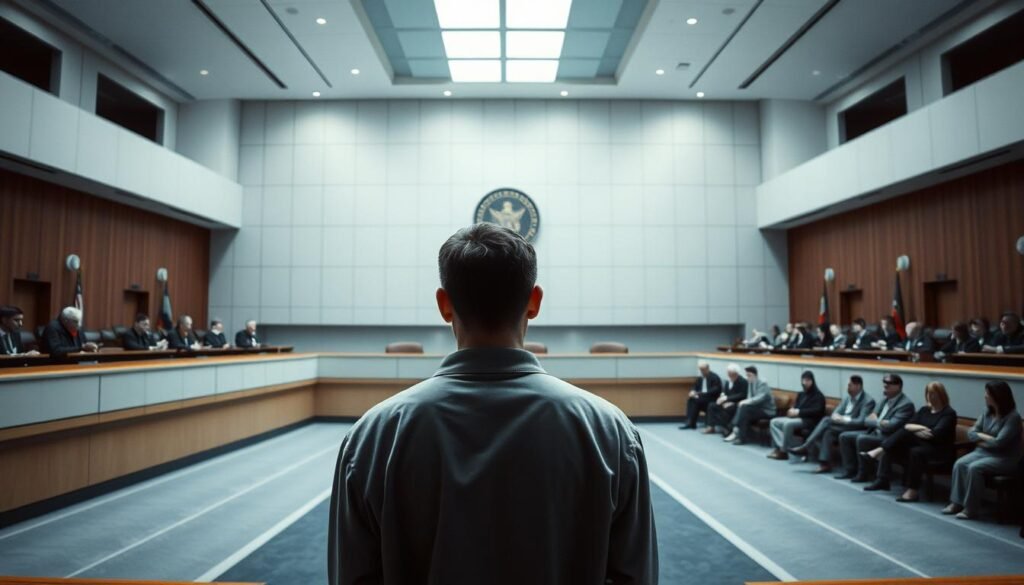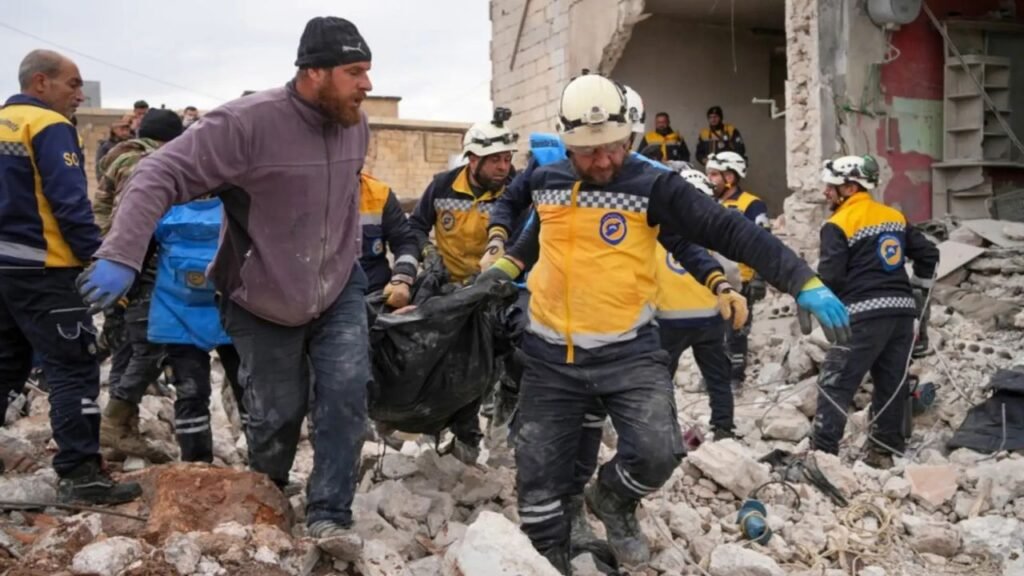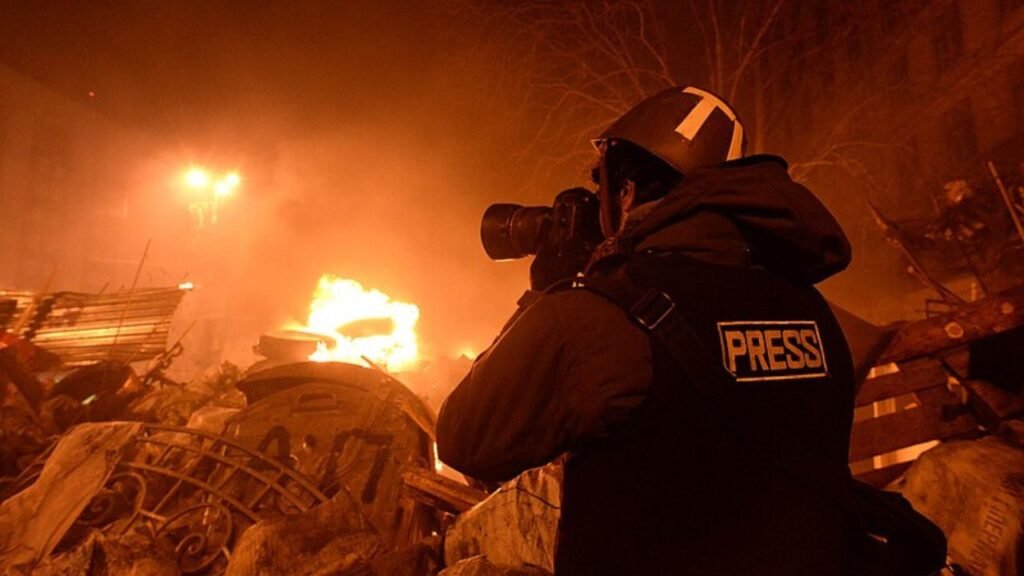Is Shooting a Surrendering Enemy a War Crime? Understanding the rules of war is key when fighting in armed conflicts. You might be curious about what makes an action a war crime. The question of whether shooting a surrendering enemy is a war crime is complex. It’s based on the principles of armed conflict.
It’s important to know the legal rules that guide armed conflicts. The war crime definition helps us see how serious certain actions are in war. The rules of war, or laws of armed conflict, tell us what’s okay and what’s not.
Contents
- 1 Understanding Surrender in Armed Conflict
- 2 Ancient and Medieval Practices
- 3 Is It a War Crime to Shoot a Surrendering Enemy?
- 4 Exceptions and Controversial Scenarios
- 5 Prosecution and Accountability for Violations
- 6 Conclusion: Is Shooting a Surrendering Enemy a War Crime?
- 7 FAQ
- 7.1 What constitutes a war crime in the context of armed conflict?
- 7.2 How is surrender defined in international humanitarian law?
- 7.3 What are the consequences of shooting a surrendering enemy?
- 7.4 What is the role of the Geneva Conventions in regulating the treatment of surrendering enemies?
- 7.5 Can military personnel be held accountable for war crimes committed during armed conflict?
- 7.6 How do international courts and tribunals prosecute war crimes?
- 7.7 What is the significance of military training in preventing war crimes?
- 7.8 Are there any exceptions to the prohibition on killing surrendering enemies?
Understanding Surrender in Armed Conflict
Exploring the history of armed conflict shows how important surrender is. The idea of surrender has changed a lot over time. This change is due to new ways of fighting, international laws, and changing social values.
Ancient and Medieval Practices
In ancient and medieval times, surrender was a personal choice. The way defeated enemies were treated varied a lot. Sometimes, they were shown mercy, while others were enslaved or killed.
The act of surrender was often seen as a sign of weakness. Whether it was accepted depended on the victor’s policies and the conflict’s circumstances.
In modern warfare, surrender has clearer rules. International humanitarian law sets out how it should be accepted and treated. The Geneva Conventions, for example, protect those who surrender. They ensure they are treated humanely and violence is not used.
Modern warfare has made handling surrender more uniform. This reflects a worldwide agreement on humanitarian law principles. [Is Shooting a Surrendering Enemy a War Crime?]
Is It a War Crime to Shoot a Surrendering Enemy?
The Geneva Conventions and their additional protocols set rules for treating enemies who surrender. Knowing these laws helps figure out if shooting a surrendering enemy is a war crime.
The Geneva Conventions are a set of international treaties that guide war conduct and protect conflict victims. Article 3, common to all four Geneva Conventions, outlines basic humanitarian rules. It bans violence to life and person, like murder and cruel treatment.
Geneva Conventions Article 3 and 41
Article 3 is key as it covers both international and non-international armed conflicts. It provides basic humanitarian protection. Article 41 of the First Geneva Convention talks about treating surrendering enemies. It says that those out of combat are protected and should not be attacked.
| Article | Provisions | Implications |
|---|---|---|
| Article 3 | Prohibits violence to life and person, including murder and cruel treatment. | Applies to all parties in a conflict, ensuring basic humanitarian protection. |
| Article 41 | Protects persons hors de combat, prohibiting attacks on them. | Ensures that surrendering or incapacitated enemies are not targeted. |
Additional Protocol I
Additional Protocol I to the Geneva Conventions clarifies protection for those in enemy hands, including surrendering individuals. It highlights the difference between combatants and non-combatants. It also bans attacking civilians or those out of combat.
These laws are not just theories; they guide actions in conflicts. The Geneva Conventions and Additional Protocol I are the foundation of international humanitarian law. They help military personnel and guide the treatment of enemies in armed conflicts.
In conclusion, shooting a surrendering enemy is a war crime under the Geneva Conventions and Additional Protocol I. It breaks humanitarian law. Knowing these laws is vital for military personnel and those involved in conflict resolution.
Exceptions and Controversial Scenarios
The rules for treating surrendering enemies are complex. It’s important to understand these rules to fully grasp the laws of armed conflict.
In many conflicts, legal precedents have shaped how enemies are treated after surrender. For example, the Nuremberg Trials after World War II set legal standards for war crimes, including the killing of surrendering enemies.
Legal Precedents
Legal precedents are key in war crime prosecution. They help us understand what a war crime is. The Geneva Conventions and their Additional Protocols are key here. They outline the protections for those who surrender.
| Precedent | Description | Implication |
|---|---|---|
| Nuremberg Trials | Established legal standards for war crime prosecution | Set a global precedent for holding individuals accountable for war crimes |
| Geneva Conventions | Outlined protections for prisoners of war and those who surrender | Provided a legal framework for the treatment of surrendering enemies |
| Additional Protocols | Further clarified the protections and rules regarding surrender | Enhanced the legal clarity on the treatment of surrendering enemies |
Military Training Considerations
Military training is crucial in how soldiers act when enemies surrender. Training that focuses on the laws of armed conflict and legal precedents can lower war crime rates.
Comprehensive military training affects soldiers’ actions in conflicts. For instance, soldiers trained to respect enemy surrender are less likely to break the law.

In conclusion, understanding the treatment of surrendering enemies requires a deep look at legal precedents and military training. By studying these, we can better understand the laws of armed conflict in action.
Prosecution and Accountability for Violations
The prosecution of war crimes is key to upholding international law. It’s important to understand how these crimes are handled in armed conflicts.
Historically, prosecuting war crimes has been crucial after conflicts end. For example, the trials after World War II have guided today’s prosecutions. [Is Shooting a Surrendering Enemy a War Crime?]
World War II Trials
The Nuremberg Trials after World War II were crucial. They showed that individuals can face justice for war crimes. These trials showed the world’s commitment to the laws of war.
- The Nuremberg Trials prosecuted high-ranking officials for war crimes and crimes against humanity.
- The trials established the principle of individual accountability for war crimes.
- The proceedings set a precedent for future war crime prosecutions.
Modern Conflict Prosecutions
In today’s conflicts, prosecuting war crimes is changing. International courts and tribunals, like the International Criminal Court (ICC), are key in these efforts.
Some important points about modern prosecutions include:
- The ICC’s role in investigating and prosecuting war crimes.
- The use of international tribunals to prosecute war crimes in specific conflict regions.
- The challenges faced by prosecutors in gathering evidence and bringing perpetrators to justice.
Looking into how war crimes are prosecuted shows it’s a complex but vital task. International courts and tribunals have been key in this effort.
Prosecuting war crimes acts as a deterrent. It ensures those responsible are held accountable, upholding international law. [Is Shooting a Surrendering Enemy a War Crime?]
See Also: Is Using a Shotgun a War Crime? The Truth Behind
Conclusion: Is Shooting a Surrendering Enemy a War Crime?
Understanding the laws of armed conflict is key when dealing with war’s complexities. You’ve learned that knowing if shooting a surrendering enemy is a war crime requires a deep look into the war crime definition and the rules of war. These rules aim to lessen war’s impact on people and communities.
Following these laws is more than just following rules; it’s about respecting human dignity and reducing suffering. It’s clear that knowing these laws well is vital for military, legal, and interested individuals.
By grasping the legal and ethical sides of war actions, you see why sticking to the laws of armed conflict is crucial. It ensures that even in conflict, some rules are kept to protect human rights and stop war crimes.
FAQ
What constitutes a war crime in the context of armed conflict?
A war crime is breaking the laws of war. This includes the Geneva Conventions and their updates. It can lead to someone being held criminally responsible.
How is surrender defined in international humanitarian law?
Surrender means giving up to the enemy. It’s when you stop fighting and is protected by international law. [Is Shooting a Surrendering Enemy a War Crime?]
What are the consequences of shooting a surrendering enemy?
Shooting someone who has surrendered is a war crime. It can lead to serious legal consequences, including punishment under international law.
What is the role of the Geneva Conventions in regulating the treatment of surrendering enemies?
The Geneva Conventions, especially Articles 3 and 41, and Additional Protocol I, set rules for treating surrendering enemies. They protect these individuals and ban violence against them.
Can military personnel be held accountable for war crimes committed during armed conflict?
Yes, military personnel can face charges for war crimes. This includes killing enemies who have surrendered. They can be tried in both domestic courts and international courts like the International Criminal Court.
How do international courts and tribunals prosecute war crimes?
International courts, like the International Criminal Court, investigate and try war crimes. They gather evidence and hold trials to punish those responsible for their actions.
What is the significance of military training in preventing war crimes?
Military training is key in stopping war crimes. It teaches soldiers about war laws, rules of engagement, and the consequences of breaking these rules. This helps create a culture that respects international humanitarian law.
Are there any exceptions to the prohibition on killing surrendering enemies?
While there are no general exceptions, certain situations might be reviewed. These include self-defense or necessity. However, these are carefully examined and do not excuse violating international law.

Vicente Underwood is from New Jersey, USA. He studied law and now works with his senior. In his free time, he writes blogs. Jackson is a proud father of two girls and enjoys balancing his work and family life.




